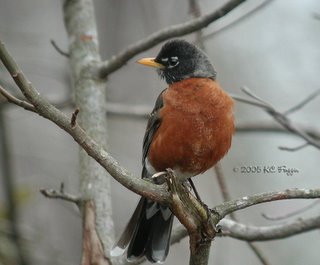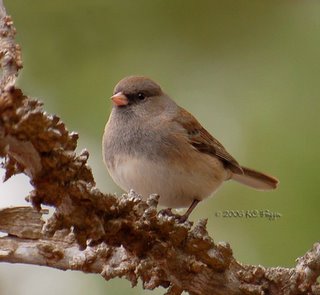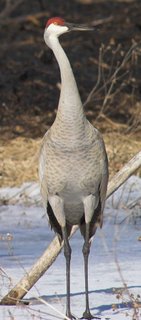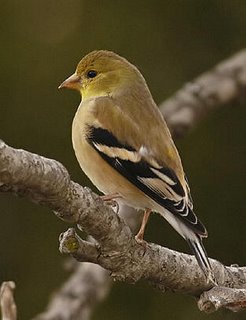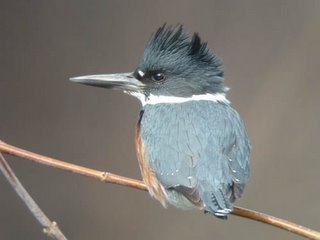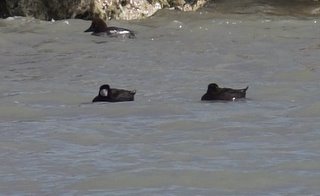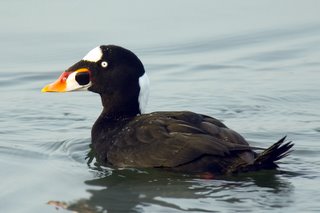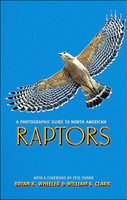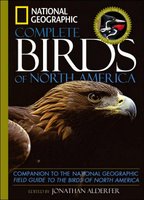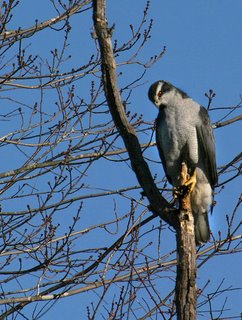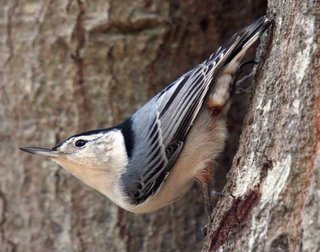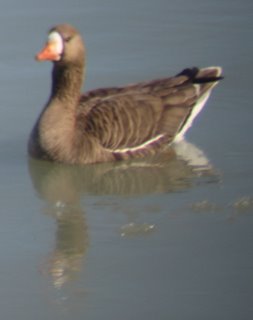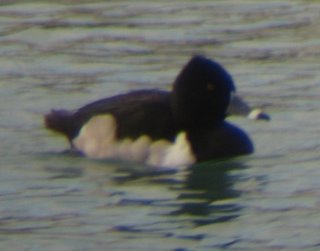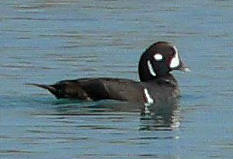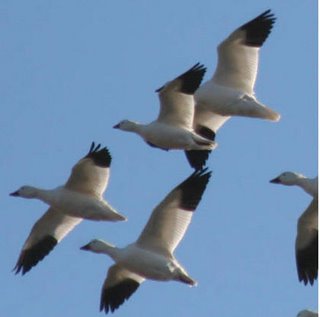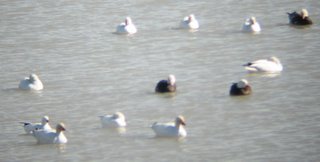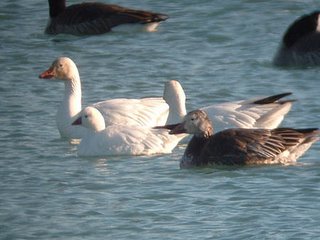Great Horned Owl at Caldwell Woods/Bunker Hill Oxbow area
North Oxbow field rim at Caldwell Woods/Bunker Hill area, Chicago, Illinois
Lynne wanted to go for a short run tonight, I wanted to get outside after sitting at my desk all day, we decided to head up to the Bunker Hill Forest Preserve area north of Devon off of Caldwell Avenue. Lynne could get a short run, I could take the kids and see if the Oxbow area would yeild an American Woodcock or two for me displaying.
First rule of birding with kids, don't expect too much. Second rule of birding with kids, be ready for anything. It was my daughter Anna Grace who was looking toward the east while I was looking to the south with my glasses that yelled "Here comes a funny bird daddy." I whipped around, and saw what I would guess was an American Woodcock, or closely related species, as it was flying just above tree level from Caldwell Avenue toward the Chicago River. Now I have never seen a woodcock before, so I can't count this as a positive ID, but it was the funniest, silliest looking, stubby-tailed, fat long round-bodied, squat-winged flying bird, with a large bill, that I had ever seen. Hopefully it was an American Woodcock, and I will find some in this area later this spring.
Of course, had I been without kids I would have gone the third of a mile to the river to flush this bird out if I could, but I was with a 3 year old and a 9 month old in a stroller, and going across the open field with this stroller was not in my plans.
So we kept puttering about on the upper edge of the Oxbow area of this woods, listening intently for what we could hear, we heard a Northern Cardinal in the distatnce, an American Robin enthusiastically calling for a mate or marking its territory, and we heard what I thought was a Common Nighthawk call, but after getting back to my laptop and checking out the Birds of North America (BNA) website, I decided it was not a Common Nighthawk call, but probably some type of frog instead.
We also found about a dozen Mallard Ducks, and saw more doing flyovers when Anna Grace spotted her mom running up the path to meet us. Lynne took over watching the kids, and I made one last dash down into the Oxbow area to find some American Woodcocks. All of a sudden, out of the corner of my eye, I saw the large open wings of a raptor moving in from the north to a tall tree on the edge of the field area I was in. As it was the end of dusk, this probably wasn't one of the area Red-tailed Hawks, this was an owl.
Its wings were much broader than a hawk's, and as it settled into a perch at the top of the largest tree on the rim of the field, I could see it's round face and distinctive ears, it had to be a Great Horned Owl. It was. I watched it for 5 or more minutes, and then went back up out of this floodplain field to see if I could find Lynne and Anna Grace quickly enough so they could see this wonder too. I did, and Lynne, who loves owls, was especially appreciative. Anna Grace thought it was so "small." I couldn't quite get her to understand that it was just that it was far away and that we didn't want to get any closer and scare it away. Concept not understood. She saw it, and talked about it all night, probably only because that was what Lynne and I talked about the whole car ride home, and if that is what it takes for her to begin appreciating these wonders, so be it.
Once I pointed it out to them, and we moved a bit closer, we watched for another 10 minutes, and then as silently as it arrived, it spread its wings and very swiftly swooped down from his perch into the field, where it was now almost pitch black, and disappeared from our vision. I don't think I have ever been this close to a flying Great Horned Owl, and it was the first owl I found on my own in the wild, or should I say it found me. Well, anyway, I wasn't following somebody else's directions to find this owl. This one was all ours. Thrilling. And what a wingspan! All just three plus miles from our home.
No "new" birds (don't feel I can count the flyover of the woodcock-like bird), but if you can't appreciate this kind of birding thrill, then you shouldn't be counting species in the first place.
